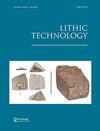Wolfgang Taute’s Excavation at the Open-Air Site Feuersteinacker and the Early Mesolithic in the Western Part of Central Germany
IF 1.2
3区 社会学
Q2 ANTHROPOLOGY
引用次数: 1
Abstract
ABSTRACT Surveys near the village of Stumpertenrod revealed one of the largest Mesolithic assemblages in Germany. As a consequence of agricultural activities, the archaeological layers were partly eroded and the lithic artifact consisted mainly of surface finds. Between 1964 and 1966 Wolfgang Taute – a key-figure for the study of the Mesolithic in Europe – opened a trial-trench. Due to a lack of organic material, the campaign did not lead to the expected outcome and the site slowly fell into oblivion. The following article presents the results of typo-technological analyses of the lithic assemblage discovered in the course of the excavation. It provides new insights into the subsistence strategies of people during the early Holocene and re-integrates this significant site in current frameworks and debates. Furthermore, an interregional comparison of archaeological features and topographic parameters involving modern theoretical and methodological approaches, leads to a better understanding of the Early Mesolithic in the western part of Central Germany.Wolfgang Taute的露天遗址Feuersteinacker和德国中部西部早期中石器时代的发掘
摘要Stumpertenrod村附近的调查揭示了德国最大的中石器时代组合之一。由于农业活动,考古层被部分侵蚀,石器时代的人工制品主要由表面发现物组成。1964年至1966年间,Wolfgang Taute——欧洲中石器时代研究的关键人物——开辟了一条试验沟。由于缺乏有机材料,这场运动没有达到预期的结果,该网站慢慢被遗忘。以下文章介绍了对发掘过程中发现的石器组合进行类型错误技术分析的结果。它为全新世早期人们的生存策略提供了新的见解,并将这一重要遗址重新整合到当前的框架和辩论中。此外,采用现代理论和方法对考古特征和地形参数进行区域间比较,有助于更好地了解德国中部西部的中石器时代早期。
本文章由计算机程序翻译,如有差异,请以英文原文为准。
求助全文
约1分钟内获得全文
求助全文

 求助内容:
求助内容: 应助结果提醒方式:
应助结果提醒方式:


